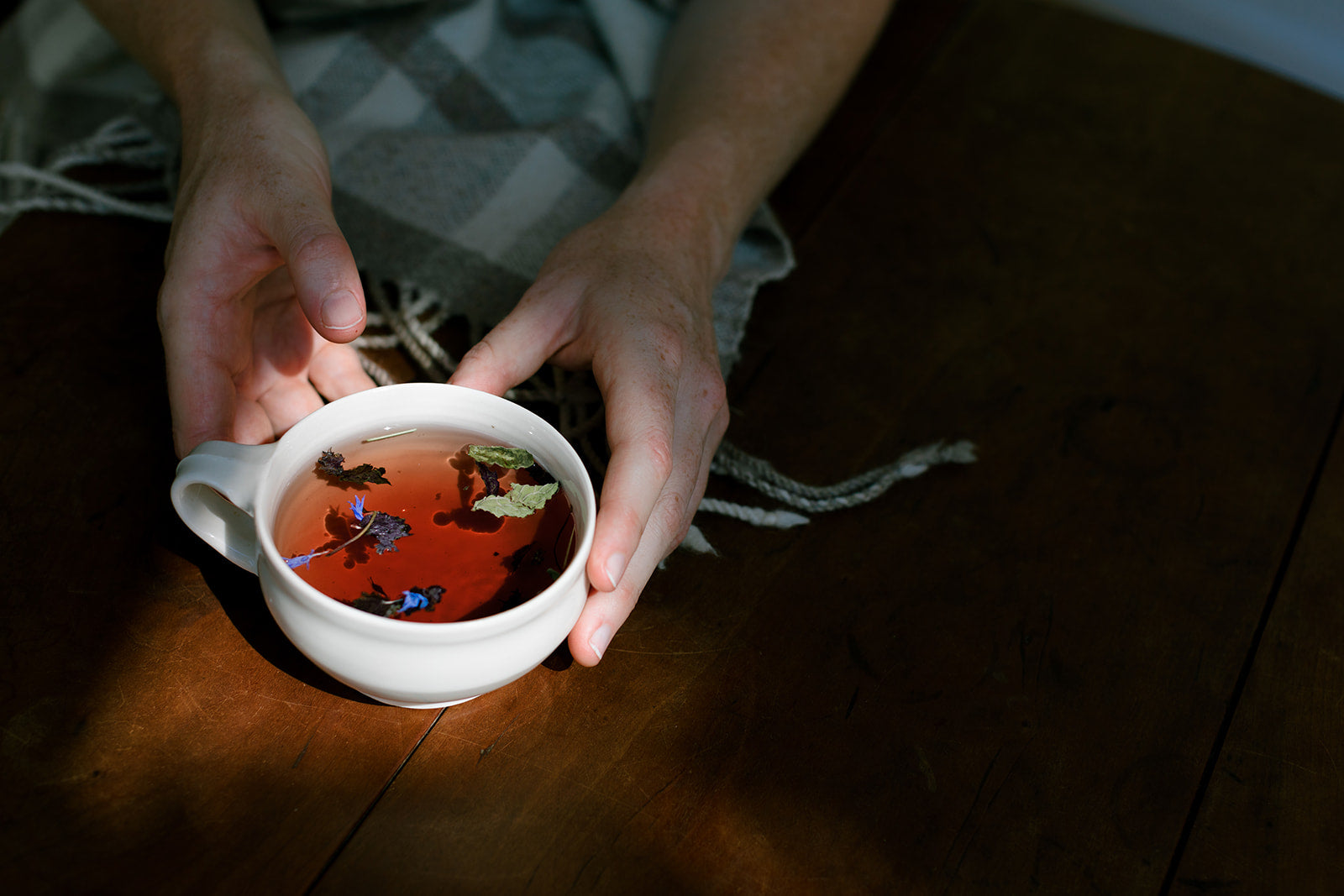Marshmallow Root
By Althea Arnold
The plant that teaches hydration from the inside out.

October in the Northern hemisphere is a month of drawing inward. The heat finally loosens its hold; mornings carry the scent of damp leaves and woodsmoke. In the garden, stalks yellow, seeds scatter, and everything aboveground begins to quiet. It’s in this stilling – when the plant’s energy folds down toward its roots – that the time comes to harvest marshmallow root (Althaea officinalis).
Marshmallow belongs to the Malvaceae family – kin to hibiscus and hollyhock, and cousin to the wild mallows that edge fields and roadsides. Its name carries ancient meanings: malva, from the Greek for “soft,” and althaea, from althainein, “to heal.” Native to Europe, Western Asia, and North Africa, the plant has followed humans wherever they’ve gone, naturalizing in new soils and climates. Colonists brought it to North America for both beauty and remedy; it was prized for soothing the body’s inflamed and irritated places; the throat, the lungs, the skin, and the gut.

As autumn air turns crisp and dry, our bodies respond similarly – our skin may dull, our throats feel scratchy, and even digestion feels less fluid. Marshmallow root offers us hydration from the inside out: cool, moist, and soothing. Its mucilaginous compounds coat and protect the body’s delicate tissues, restoring balance to what the season strips away.
You can find marshmallow’s gentle medicine woven through several of our blends:
- Breathe – Strong Lung Syrup, where it moistens and soothes the lungs alongside warming ginger root;
-
Village Tea Mineral Infusion, grounding the mineral-rich greens, which can be drying, and creating a velvety feel;
- Helios Tea, where its quiet sweetness balances the astringency of lemon verbena and lavender;
- and in our Face Oil, where extracts of marshmallow tops join calendula, yarrow, and chamomile to calm inflammation, support the skin’s barrier, and bring a soft, natural glow.
In any form, marshmallow root teaches a simple lesson for this inward-turning season: to heal by softening, to protect by yielding, and to draw strength quietly from within.
References & further reading:
According to a 2011 review in the Journal of Ethnopharmacology, researchers found that species in the Althaea genus contain compounds with demulcent and anti-inflammatory properties. (Kumar et al., 2011)
According to the Smithsonian Environmental Research Center’s Marine Invasions Research Lab, Althaea officinalis is native to Europe, Western Asia, and North Africa, and has since naturalized across parts of North America, particularly along moist, coastal habitats. (Smithsonian Environmental Research Center, n.d.)



Leave a comment